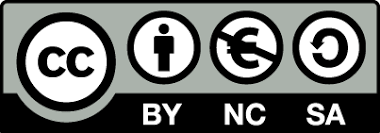บทคัดย่อ
การศึกษานี้มีวัตถุประสงค์เพื่อ (1) สำรวจความน่าเชื่อถือของเว็บสุขภาพไทย และ (2) วิเคราะห์กระบวนการจัดทำเว็บสุขภาพในประเทศไทย แบ่งการดำเนินการวิจัยเป็น 2 ส่วน คือ 1) การวิจัยเชิงปริมาณ โดยทำการสำรวจเว็บสุขภาพของไทยทั้งหมด 1,888 เว็บ มีเว็บสุขภาพผ่านเกณฑ์การคัดเลือกเว็บ 255 เว็บ มาวิเคราะห์หาความน่าเชื่อถือของเว็บสุขภาพที่ให้บริการบนอินเทอร์เน็ต ข้อมูลที่ได้วิเคราะห์หาความถี่ และร้อยละ และ 2) การวิจัยเชิงคุณภาพ เพื่อศึกษากระบวนการจัดทำเว็บสุขภาพ โดยวิธีการสัมภาษณ์ผู้รับผิดชอบเว็บ จำนวน 30 คน ข้อมูลจากการสัมภาษณ์นำมาวิเคราะห์เนื้อหา สรุปเป็นขั้นตอนการสร้างเว็บสุขภาพ ผลการศึกษาพบว่า ความน่าเชื่อถือของเว็บสุขภาพส่วนมากร้อยละ 99.20 เป็นเว็บที่มีเนื้อหาในเว็บไม่ขัดต่อกฎหมาย ศีลธรรม/จริยธรรม รองลงมาคือ การให้ที่อยู่ (E-mail address) ที่ผู้อ่านสามารถติดต่อได้ มีช่องทางให้ผู้อ่านแสดงความคิดเห็นได้ สามารถทำการเชื่อมโยงข้อมูลที่ระบุไว้ได้ ร้อยละ 77.30, 71.80 และ 67.50 ตามลำดับ แต่อย่างไรก็ตามเว็บสุขภาพส่วนมากยังขาดการให้ข้อมูลเกี่ยวกับเรื่อง 1) การมีข้อมูลเตือนให้ใช้วิจารณญาณในการตัดสินใจใช้ข้อมูลมากที่สุด คือ เพียงร้อยละ 9.0 มีข้อมูลเตือนให้ใช้วิจารณญาณในการตัดสินใจใช้ข้อมูลที่เผยแพร่บนเว็บ 2) รองลงมาคือ การระบุวันที่ในการเผยแพร่ข้อมูล 3) การระบุวันเวลาในการปรับปรุงข้อมูล 4) การอ้างอิงหรือระบุแหล่งข้อมูลของเนื้อหาที่ปรากฏบนเว็บและ 5) การระบุชื่อผู้เขียนบทความหรือข้อความบนเว็บ ร้อยละ 12.20, 13.70, 32.20 และ 33.30 ตามลำดับ ส่วนการสัมภาษณ์ผู้ดูแลเว็บเกี่ยวกับกระบวนการจัดทำเว็บสุขภาพประกอบด้วย 7 ขั้นตอน ดังนี้ (1) ความสนใจในอินเตอร์เน็ต การสร้างเว็บสุขภาพเกิดจากความสนใจส่วนตัวในการใช้คอมพิวเตอร์และการท่องเที่ยวเว็บสุขภาพผ่านอินเตอร์เน็ต (2) การริเริ่มการสร้างเว็บ ผู้ดูแลเว็บจะเริ่มศึกษาวิธีการสร้างเว็บจากผู้เชี่ยวชาญ หรือศึกษาด้วยตนเองโดยการอ่านจากหนังสือ (3) การกำหนดวัตถุประสงค์ของเว็บส่วนมากจะเป็นการจัดทำเพื่อเผยแพร่ความรู้เรื่องสุขภาพสู่ประชาชน บางรายสร้างเพื่อประชาสัมพันธ์ธุรกิจของตนควบคู่ไปด้วย สำหรับกลุ่มเป้าหมายของเว็บสุขภาพที่ได้จากการสัมภาษณ์จะสอดคล้องกับผลการสำรวจ กล่าวคือ กลุ่มเป้าหมายจะมีทั้งกลุ่มประชาชนและเจ้าหน้าที่ทางการแพทย์ (4) การดำเนินการสร้างเว็บ จะประกอบด้วย 2 ลักษณะ ผู้ดูแลเว็บสร้างเอง และว่าจ้างผู้อื่นสร้างเว็บให้ (5) การหาข้อมูลในส่วนของเนื้อหาสุขภาพ ผู้ดูแลเว็บจะเป็นผู้รับผิดชอบจัดหาเนื้อหา โดยการเขียนจากประสบการณ์ของตนเอง การศึกษาค้นคว้าจากแหล่งข้อมูลต่างๆ รวมถึงการสอบถามจากผู้เชี่ยวชาญ (6) การแปลงข้อมูล ผู้ดูแลเว็บมีการนำเสนอข้อมูลเป็นหลายรูปแบบ ได้แก่ การเสนอเป็นบทความที่เขียนขึ้นใหม่เป็นบทความสั้นๆ ใช้ภาษาที่เข้าใจได้ง่าย บทความที่คัดลอกมาจากแหล่งข้อมูลอื่นๆ การถาม-ตอบ ซึ่งมักจะเป็นการใช้กระดานข่าวเป็นสื่อในการถาม-ตอบปัญหาสุขภาพและการเชื่อมโยง (Link) ถึงแหล่งข้อมูลอื่นและ (7) การปรับปรุงข้อมูล ซึ่งประกอบด้วยกลุ่มที่กำหนดระยะเวลาในการปรับปรุงข้อมูล และกลุ่มที่ไม่ได้กำหนดระยะเวลาแน่นอนในการปรับปรุงข้อมูลจากการสำรวจเว็บและการสัมภาษณ์ผู้ดูแลเว็บ พบว่าเว็บสุขภาพไทยยังมีความน่าเชื่อถือน้อย และจากข้อมูลที่ได้จากการสัมภาษณ์จะมีข้อมูลบางส่วนที่สอดคล้องกับการสำรวจข้อมูลในเว็บสุขภาพ คือผู้ดูแลเว็บยังไม่ได้ให้ความสำคัญกับข้อมูลที่ควรระบุให้ผู้ใช้ข้อมูลทราบ เช่น การระบุชื่อผู้เขียนบทความ วันเวลาในการเผยแพร่ข้อมูล วันเวลาในการปรับปรุงข้อมูล และการให้แหล่ง อ้างอิงข้อมูล สุขภาพบนเว็บ นอกจากนี้จากการสำรวจเว็บ พบว่า ยังมีบางเว็บยังไม่จำกัดข้อมูลให้อยู่เฉพาะข้อมูล สุขภาพ ที่สอดคล้องกับตามวัตถุประสงค์ของเว็บ ทำให้มีบางข้อความที่เป็นการโฆษณาขายสินค้า การประกาศรับสมัครงาน รวมถึงการใช้ภาษาที่ไม่สุภาพเผยแพร่บนอินเตอร์เน็ตด้วย
บทคัดย่อ
According to the advanced technology information, varieties of information are increasing disseminated on the Internet. In particular, health information is contained in web site in order to gain knowledge, give opinions from experience and advertise health products and clinics. Although those webs are rapidly increased on the Internet but there is no guarantee that how credible the health information or health web is. Thus the purposes of this research were 3 folds: to (1) survey the credibility of Thai health webs, and (2) analyze the process of health web development. This study was employed 2 research approaches: (1) survey approach by examining credibility of 255 webs, based on study criteria from 1,888 Thai health webs. These data were analyzed by using frequency and percentage (2) qualitative approach by interviewing 30 webmasters regarding how to develop health web. The qualitative data were analyzed by using content analysis method to explore the process of web development. The majors’ findings were as follows: 1. Findings from the survey, twelve criteria of a web credibility were used to examine the webs. There were 99.20 % of health webs via the Internet proposed health information with legal or/and ethical contents. There were 77.30, 71.80, and 71.80 % of health webs giving an e-mail address of a webmaster and contacting channel for users, and provide successful links to other sources respectively. However, few health webs (9%) were given a disclaimer. Other criteria including date of creation, date of last update, references, and authors were disclosed on the webs only 12.20, 13.70, 32.20, and 33.30% respectively. 2. According to interviews, webmasters reported 7 steps of web development: (1) Beginning with individual interest, the initiation of developing a health web was started with an interest to create Thai health web after exploring health webs from other countries via the Internet. (2) Learning to create web, webmasters learned how to create a web by asking experts or self studying. (3) Letting aims and target group, some webmasters developed health webs for providing health information to public while some wanted to advertise their health products or clinics. Thus, the target groups of those health webs are general people and health care personnel. (4) Developing web patterns, some webmasters created a web by themselves whereas some hired experts to develop it. (5) Searching information, webmasters used variety of sources, such as individual expertise, experience, and other experts, and so on to collect health information. (6) Transforming data, after collecting enough health information, webmasters would transform those data from using technical terms to be general terms for people understandable in the patterns of new articles, cut and paste articles, and questions and answers column. (7) Updating information, this step, webmasters would regularly or irregularly update their health information. Comparing data between from survey and interviews, it was found that most webmasters less realized to show the credibility of health information and health web. In addition, some webs were not screened inappropriate language and or disconnected contents before posing new information on the Internet.


